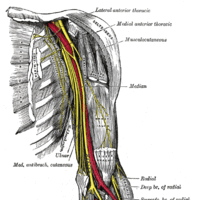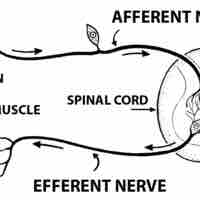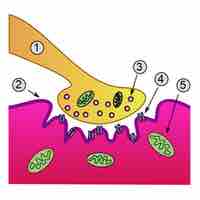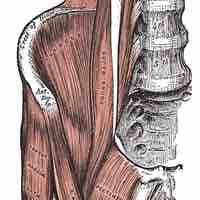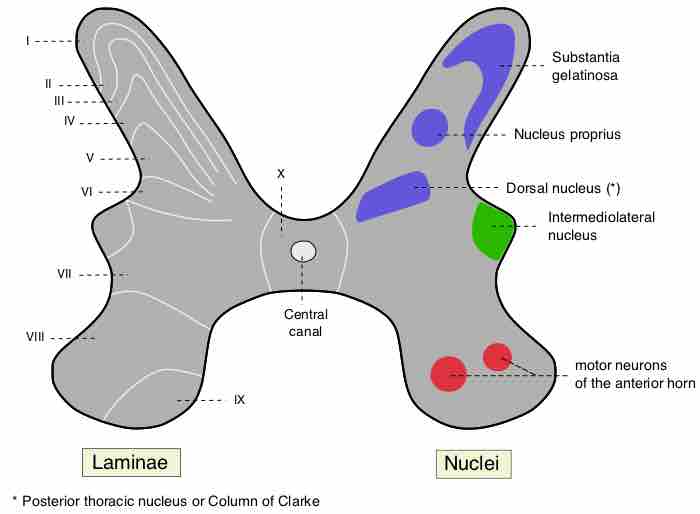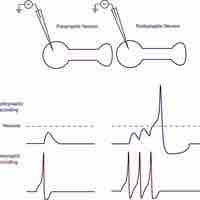Chapter 12
Peripheral Nervous System
By Boundless
Sensation refers to our ability to detect or sense the physical qualities of our environment.

The goal of sensation is detection, while the goal of perception is to create useful information about our environment.
A sensory modality (also called a stimulus modality) is an aspect of a stimulus or what is perceived after a stimulus.
The somatosensory system is composed of the neurons that make sensing touch, temperature, and position in space possible.
Touch is sensed by mechanoreceptive neurons that respond to pressure in various ways.
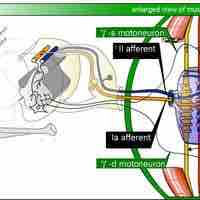
Proprioception refers to the sense of knowing how one's body is positioned in three-dimensional space.
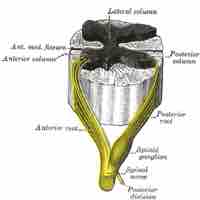
The somatosensory pathway is composed of three neurons located in the dorsal root ganglion, the spinal cord, and the thalamus.
The cortical sensory homunculus is located in the postcentral gyrus and provides a representation of the body to the brain.
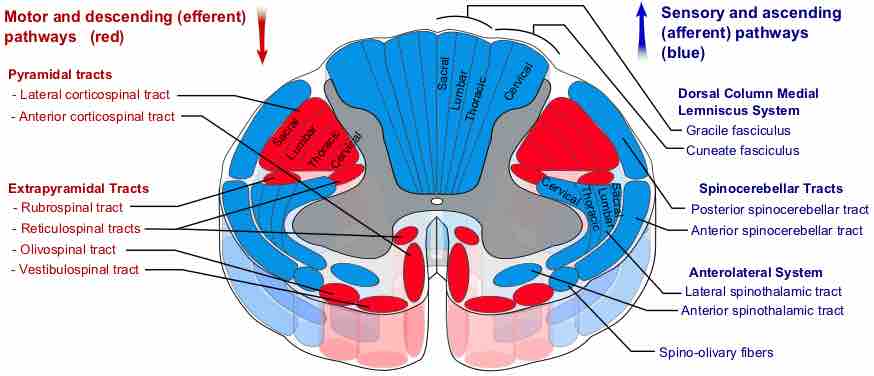
The ventral and dorsal spinocerebellar tracts convey proprioceptive information from the body to the cerebellum.
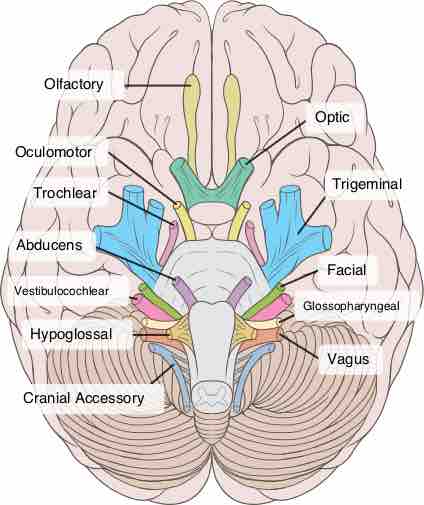
The peripheral nervous system has 12 pairs of cranial nerves that control much of the motor and sensory functions of the head and neck.

The olfactory nerve, or cranial nerve I, is the first of 12 cranial nerves and is responsible for the sense of smell.
The optic nerve (cranial nerve II) receives visual information from photoreceptors in the retina and transmits it to the brain.
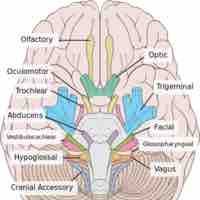
The oculomoter nerve (cranial nerve III) controls eye movement, such as constriction of the pupil and open eyelids.

The trochlear nerve (cranial nerve IV) is a motor nerve that innervates a single muscle: the superior oblique muscle of the eye.
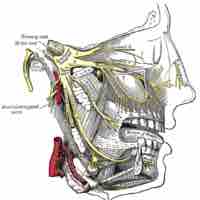
The trigeminal nerve is the fifth cranial nerve and it is responsible for sensation and motor function in the face and mouth.

The abducens nerve (cranial nerve VI) controls the lateral movement of the eye through innervation of the lateral rectus muscle.
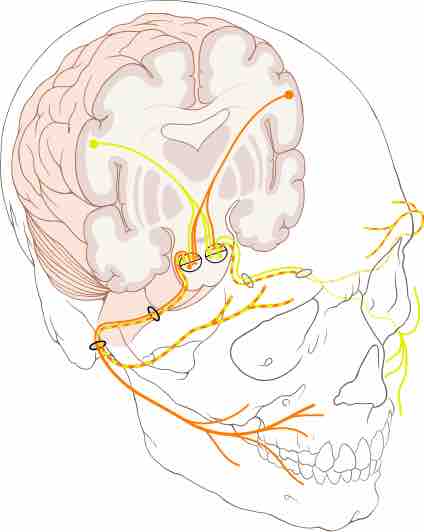
The facial nerve (cranial nerve VII) determines facial expressions and the taste sensations of the tongue.
The vestibulocochlear nerve (cranial nerve VIII) carries information about hearing and balance.

The glossopharyngeal nerve (cranial nerve IX) serves many distinct functions, including providing sensory innervation to various head and neck structures.
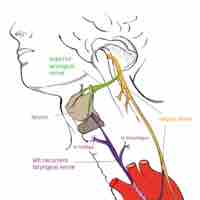
The vagus nerve (cranial nerve X) is responsible for parasympathetic output to the heart and visceral organs.
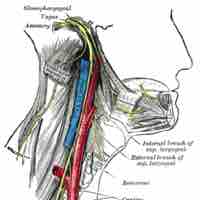
The accessory nerve (cranial nerve XI) controls the muscles of the shoulder and neck.
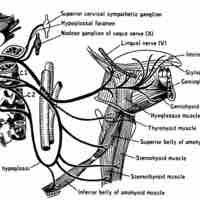
The hypoglossal nerve (cranial nerve XII) controls the muscles of the tongue.

Spinal nerves, a part of the peripheral nervous system (PNS), are mixed nerves that send motor, sensory, and autonomic signals between the CNS and the body.
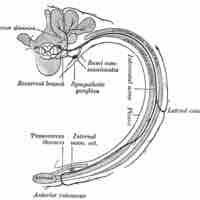
The spinal nerves branch into the dorsal ramus, ventral ramus, the meningeal branches, and the rami communicantes.

A nerve plexus is a network of intersecting nerves that serve the same part of the body.
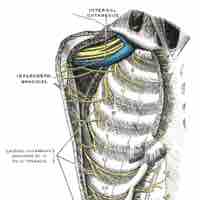
The anterior divisions of the thoracic spinal nerves (T1–T11) are called the intercostal nerves.
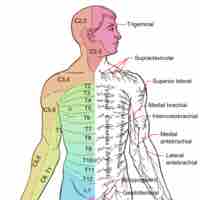
A dermatome is an area of skin that is supplied by a single spinal nerve, and a myotome is a group of muscles that a single spinal nerve root innervates.
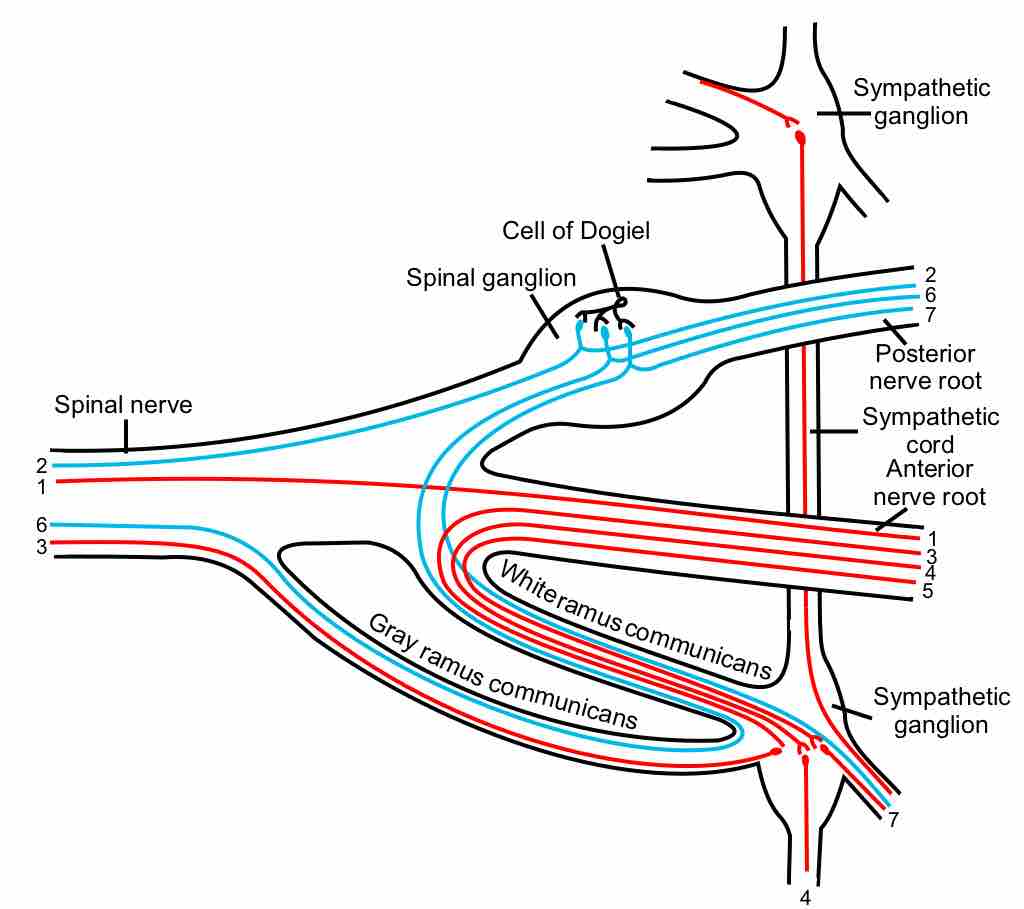
Spinal nerves connect the brain and spinal cord to the limbs and organs of the body.
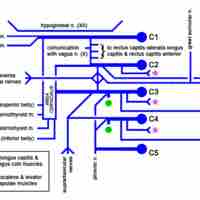
The cervical plexus is the plexus of the ventral rami of the first four cervical spinal nerves.

The brachial plexus is formed by the four lower cervical spinal nerves and the first thoracic spinal nerve.
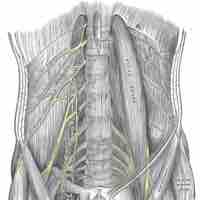
The lumbar plexus is formed by the subcostal nerve and divisions of the first four lumbar nerves that arise from the middle to lower back.
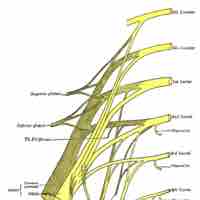
The sacral plexus is the plexus of the three sacral spinal nerves (S2–S4) that arise from the lower back just above the sacrum.

The spinothalamic tract is a somatosensory tract and the corticospinal tract is a motor tract.

The motor system is the part of the central nervous system that is involved with movement.

The basal ganglia are responsible for voluntary motor control, procedural learning, and eye movement, as well as cognitive and emotional functions.
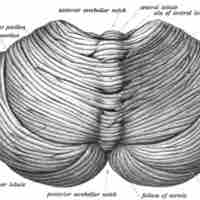
The cerebellum is important for motor control—specifically coordination, precision, and timing—as well as some forms of motor learning.
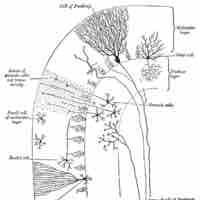
The cerebellum uses feedforward processing and modularity to process information.
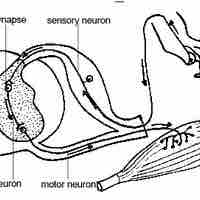
A reflex arc defines the pathway by which a reflex travels—from the stimulus to sensory neuron to motor neuron to reflex muscle movement.

Spinal reflexes include the stretch reflex, the Golgi tendon reflex, the crossed extensor reflex, and the withdrawal reflex.
- The Spinal Cord
- The Brain
- Protection of the Brain
- The Brain Stem
- The Cerebellum


